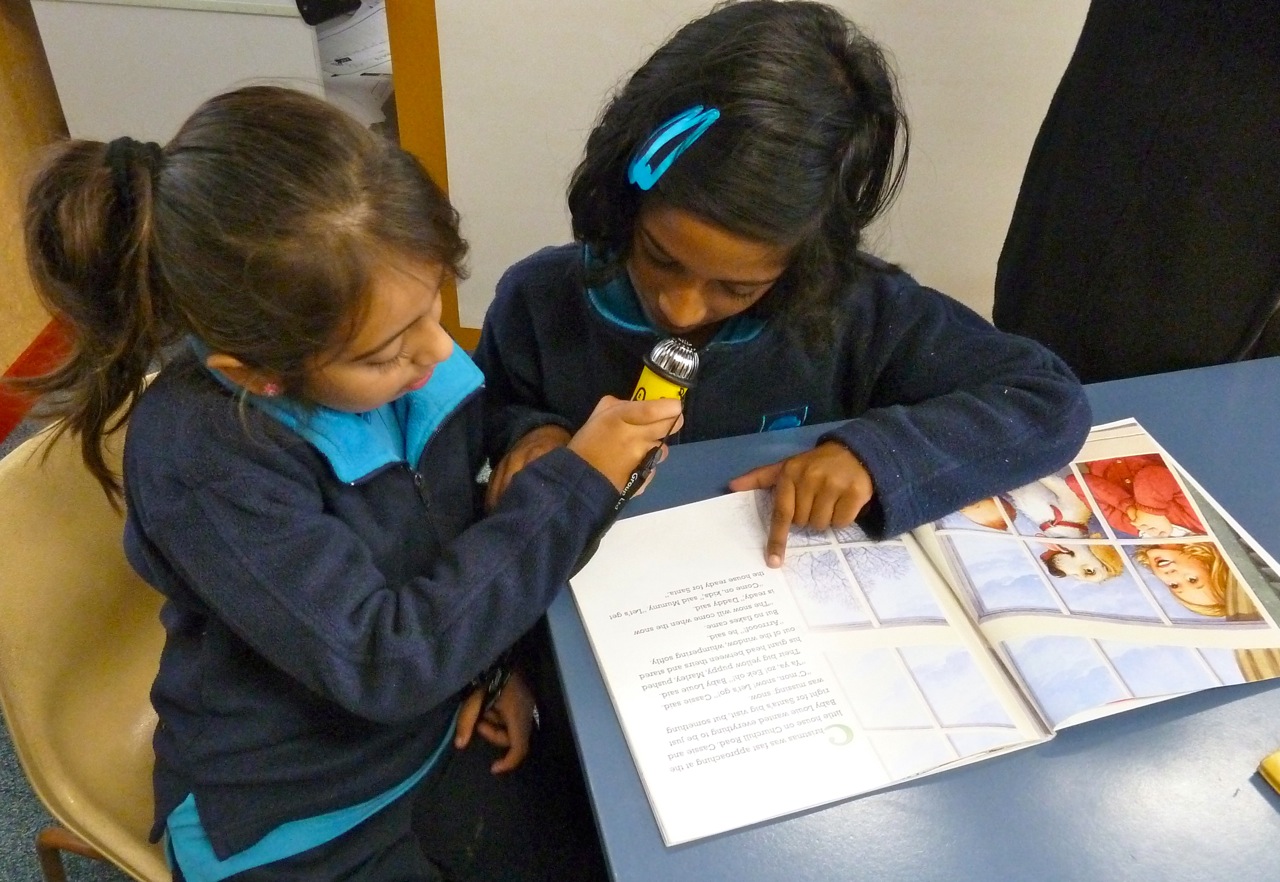Age: 6+yrs Ease *****
Overview
Making audio recordings has never been easier thanks to a raft of free and easy to use downloadable software. We use Audacity® when asking pupils to record themselves reading individually or in a group. We use the audio recording for assessment purposes (peer, self and teacher assessment) and reporting to parents.
Description
If you do not already have an audio program on your computer, you will need to download it from the web (use the link below). Downloading Audacity® is free, easy and it’s ready to use within minutes.
When you’re all set and ready to go, ask learners to open the program. The control panel may look complicated but you’ll basically only be using three buttons: the record (button with red circle in the middle) the stop (button with the square in the middle) and play (button with the green triangle in the middle. These are easily recognisable as they are the same as you’ll find on any traditional audio equipment you have at home e.g. VCRs, DVD players etc.
When learners are ready, they simply press the record button and begin reading. When they are done, they simply press stop. They can play the recording by pressing play! It really is that simple. It is important to tell pupils that if they make a mistake, they mustn’t stop the recording and start again in an effort to ‘get it right’. After all, if you’re using it for assessment purposes you’ll want a true reflection of their reading skills. Having said that, it is often the case that when they’re being recorded, pupils’ reading fluency improves due to greater concentration and application on their part!
The key to this activity is how you the use the recording. As stated in the overview, you can simply save the recording and use it to assess learners’ independent reading skills. It is particularly helpful if you record them at different stages throughout the term/year so that you can evaluate their development. We’ve also used it to play recordings to the class asking peers for feedback (ask the pupils concerned if they are happy for you to do this as some are shy and could find this quite uncomfortable). Learners can use the feedback in order to set personal targets for reading.
What do I need?
Audacity® or any similar audio recording software. You may already have this as part of a bundle when you bought your PC. This is usually true for Mac users.
http://audacity.sourceforge.net/download/
Added value
Producing hard evidence of pupils’ reading attainment is a perennial problem and has usually involved a lot of expensive and temperamental hardware such as tape/CD recording equipment. Using Audacity® is much easier to manage the process and, best of all, requires no financial outlay.
Hints and tips
If learners are unused to hearing their voice on a recording they can be quite nervous and/or giggly, so maybe you’d like to have a couple of trial runs whilst recording so that they can get used to the experience. In our experience, learners become quite blasé about it once the novelty has worn off.
If you need a transportable hard copy of the recordings, say for moderation or standardisation purposes, recordings can be saved to CD or USB. They can also be emailed SEN agencies or parents if required.
Safety
There are no internet or IT safety issues, but remember to ask learners if they’re happy to have their recordings played to the class. Some learners would find this uncomfortable, especially if their reading was being assessed by peers.
Other opportunities to use the same software:
- Check out the unit Reading Recitals for ideas on how to keep parents up-to-date on learners’ development in reading.
- Begin creating pre-recorded radio broadcasts: learners write a script, choose songs they’d like to play and arrange interviews e.g. with the head teacher.
- Check out the unit e-Storybook for ideas on using audacity in story writing.
This post is also available in: Dutch, German, Italian, Portuguese (Portugal), Romanian, Welsh





 English
English Nederlands
Nederlands Deutsch
Deutsch Italiano
Italiano Español
Español Português
Português Română
Română Cymraeg
Cymraeg
¡Gran idea! El hecho de que los niños puedan aprender a utilizar una herramienta tan útil y hacer su evaluación con ella, hace que sea del todo atreyente.
Con esta nueva metodología de evaluación, los alumnos no se sentirán cohibidos ante la autoridad del profesor/a. Además, se lo tomarán como una actividad dinámica más y al poder ver sus resultados, puede hacer que se motiven más para mejorar su lectura.
De acuerdo con la idea, se pueden hacer varias grabaciones a lo largo del curso, pero no sólo de ello, sino de todo el transcurso por toda la educación primaria. Además, se puede ampliar la utilidad de la herramienta. no solo grabar la lectura en sí, sino lo que ellos han entendido del texto, para evaluar su comprensión lectora.
¡Gracias por estas innovaciones!
thanks for the feedback! Let us know how your children respond. Even better, send us an audio file and we’d love to embed it in the Taccle2 website